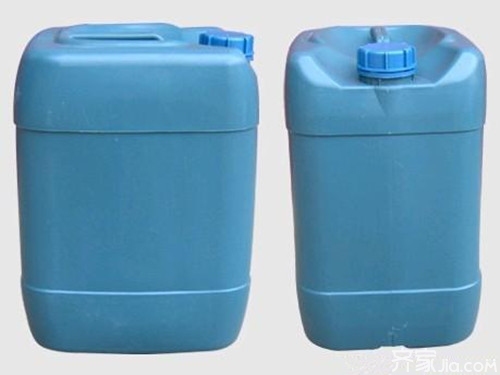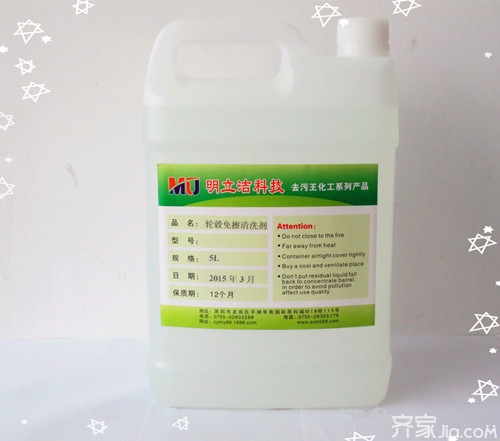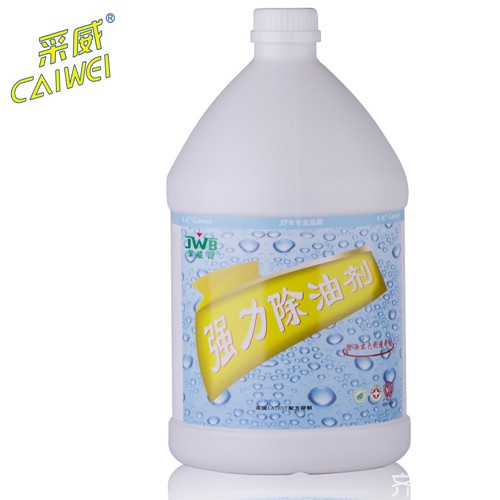Degreaser manufacturers recommend "four no" manufacturers will be eliminated
The degreaser is formulated with a variety of surface active agents and builders. This degreaser has a wide range of functions and can involve many fields, including food, equipment cleaning, medicine, construction and more Each industrial field has a very big effect. It can be used to remove mildew spots and remove all kinds of lubricating grease. Compared with petroleum solvents, it has no explosive danger, so there are many manufacturers producing degreasers on the market. In order to let everyone know how to choose degreaser manufacturers , today I have found some better degreaser manufacturers for your reference when purchasing!

Application range of degreasing agent
1. Used to clean the stubborn heavy oil stains on the surface of mechanical equipment and machine tools
2. Used for cleaning crude oil grime and sludge on the drilling platform, crude oil pipelines, storage tanks
3. Used for cleaning all kinds of coal tar pipelines, intercoolers and oil-gas separators in coking plants
4. Used to replace various types of hydrocarbon cleaning agents (flammable and explosive)
5. Degreasing and cleaning for electroplating industry
6. Used for degreasing and cleaning in the automotive industry
7. Used for ultrasonic cleaning
8. Used for cleaning various common greases (lubricating oil, anti-rust oil)
Principles of chemical degreasing
The composition of the degreasing agent depends on the type and nature of the oil and fat. The degreasing agent contains two main components, an alkaline builder and a surfactant.
1. Alkali substances
Alkaline builders commonly used are sodium hydroxide, soda ash, sodium silicate and sodium tripolyphosphate. Sodium hydroxide and soda ash as the alkaline agent are the cheapest and the wastewater is difficult to treat. Sometimes the cleaning objects are damaged due to strong alkalinity. On the other hand, sodium hydroxide and soda ash have no emulsification effect on mineral oil cleaning;
Sodium silicate and sodium tripolyphosphate can not only provide alkalinity, but also provide a certain emulsifying power. It is widely used in various degreasing cleaning agents, especially the alkali-sensitive degreasing process. The biggest disadvantage of using sodium silicate is that if it is not washed with hot water after degreasing, it is difficult to completely wash the residual sodium silicate by direct cold water washing. The residual sodium silicate will react with the acid of the next process to form a strong adhesion Silica gel, which affects the adhesion of the coating; sodium tripolyphosphate is mainly concerned with phosphorus pollution and environmental damage.
2. Surfactant
Surfactant is the most important component of degreasing agent. The early degreasing agent mainly emulsified the emulsifier, such as fatty alcohol polyoxyethylene ether (AEO) series, alkylphenol polyoxyethylene ether (TX, NP) ) Series, etc. Excessive use of emulsifier will emulsify and dissolve the oil that has fallen off into the working fluid, resulting in a gradual decline in the oil removal capacity of the working fluid, requiring frequent replacement of the working fluid.
However, as the price of surfactants rises, it is increasingly required to reduce the amount of surfactants used and increase the rate of degreasing. This requires the degreasing agent to have good dispersion and anti-secondary deposition properties. Peeled off from the metal surface, it is not emulsified or saponified in the solution, but just floats on the surface of the solution, keeping the bath liquid clear and continuous degreasing ability.
On the other hand, surfactants suitable for degreasing are generally non-ionic products. Non-ionic products are generally more expensive. In order to reduce the cost of degreasing agents, anionic products will also appear in the formulation of degreasing agents, especially At the same time, it has non-ionic anionic surfactant fatty acid methyl ester ethoxylate sulfonate (FMES), which has excellent "dispersed entanglement" characteristics, which is helpful for non-emulsified peeling and removal of grease.

How to use degreasing agent
The degreaser is suitable for high-pressure spray cleaning and ultrasonic cleaning. Ultrasonic cleaning can be diluted 10-20 times; high pressure water cleaning can be diluted 20-30 times; equipment unpacking and degreasing and heavy oil cleaning parts can be diluted 1-5 times; vegetable oil, milk, soy sauce, etc. in the food processing workshop can be diluted 10-15 times, the appearance of cleaning cars and other equipment can be diluted 10-20 times, cleaning work clothes, floors, wallpapers, etc. can be diluted 20-30 times.
Precautions for use of degreasing agent
1. The cleaning time is generally changed every five days, and the amount of the tank is added about 1% every day. It can also be changed every day according to the actual situation and added if necessary.
2. The degreaser cannot be eaten. If swallowed, induce vomiting immediately.
Degreaser manufacturer
Dacheng Hongke Insulation Material Factory
Product supply: manufacturers specializing in the production of degreasing and rust cleaning agents, quick-acting degreasing agents
Product introduction: Classification: Degreasing and rust cleaning agent
Model: HK-301
Brand: Hongke
Fragrance type: degreasing and rust cleaning agent
PH value: 6
Shelf life: 12 (months)
CAS: 365
Cleaning agent: remove oil and rust
Degreasing and rust cleaning agent: Degreasing and rust cleaning agent
Dongguan Youliya Chemical Technology Co., Ltd.
Product supply: wholesale ULY-D61A oil removal cleaning agent factory direct supply aluminum copper iron steel galvanized plate oil removal cleaning agent
Product introduction: Classification: Oil stain cleaning agent
Model: ULY-D61A
Brand: Youliya
Fragrance: None
PH value: 7.8-8.5
Shelf life: 12 (months)
Cleaning temperature: normal temperature -80 ℃
Stock dilution ratio: 5% -8%
Dipping time: 5-6min
Wuxi Kunpeng Technology Industry and Trade Co., Ltd.
Product supply: efficient descaling agent (cleaning various equipment) anti-corrosion degreasing agent degreasing agent price
Product introduction: Classification: Degreaser
Model: WL102-2
Brand: Hui Shitong
Fragrance: None
PH value: 1.5
Shelf life: 12 (months)
CAS: qualified
Function: Specially remove scale
Scope of use: water circulation pipeline, boiler central air conditioning, industrial equipment, etc.
Special service: non-toxic and non-corrosive

Hangzhou Maolai Chemical Co., Ltd.
Product supply: Hangzhou Xiaoshan factory direct sales
Product Introduction: Category: Alkaline
Cleaning fluid model: BL380
Main application: low temperature chemical degreasing of metals and plastics
Executive Standard: National Standard
Matching tank concentration: 4-5%
PH value: 10.5-12
Free alkalinity (FB): 10-20Pt
Time: 3-7 minutes
Temperature (Temp): 20-30
Update cycle: 1-2 months
Shanghai Lanfei Fine Chemical Technology Co., Ltd.
Product Supply: Degreasing Cleaner Powerful Degreasing Agent Heavy Oil Stain Cleaning Agent
Product introduction: Classification: Oil stain cleaning agent
Model: Q010-1
Brand: Shanghai Lanfei
Fragrance: tasteless
PH value: alkaline
Shelf life: 24 (months)
CAS: Integrity for business
Editor's summary: Compared with petroleum solvents, degreasers really have a lot of hidden safety hazards, and they have a thorough decontamination and mildew removal effect. Therefore, the demand on the market is increasing. However, when selecting manufacturers, it is also necessary to understand whether the main purpose of the degreaser products they produce meets their own needs.
What, the decoration still uses his own money? ! The Qi family is decorated in installments, with an ultra-low annual interest rate of 3.55% and a maximum loan of 1 million. Apply now to enjoy the discount
If you are interested in brand cooperation, content cooperation, and advertising of this website, please send an email to :.
A toilet is a piece of sanitary hardware that collects human urine and feces, and sometimes toilet paper, usually for disposal. Flush toilets use water, while dry or non-flush toilets do not. They can be designed for a sitting position popular in Europe and North America with a toilet seat, with additional considerations for those with disabilities, or for a squatting posture more popular in Asia (see squat toilet). In urban areas, flush toilets are usually connected to a sewer system that leads to septic tanks in isolated areas. The waste is known as blackwater and the combined effluent including other sources is sewage. Dry toilets are connected to a pit, removable container, composting chamber, or other storage and treatment device, including urine diversion with a urine-diverting toilet.
Flush toilets, portable toilet, camping toilet, public toilet, smart toilet, bathroom toilet, installing a toilet, squat toilet, luxury toilet
Zhejiang Yinglin Luggage Co. Ltd , https://www.yllcluggage.com